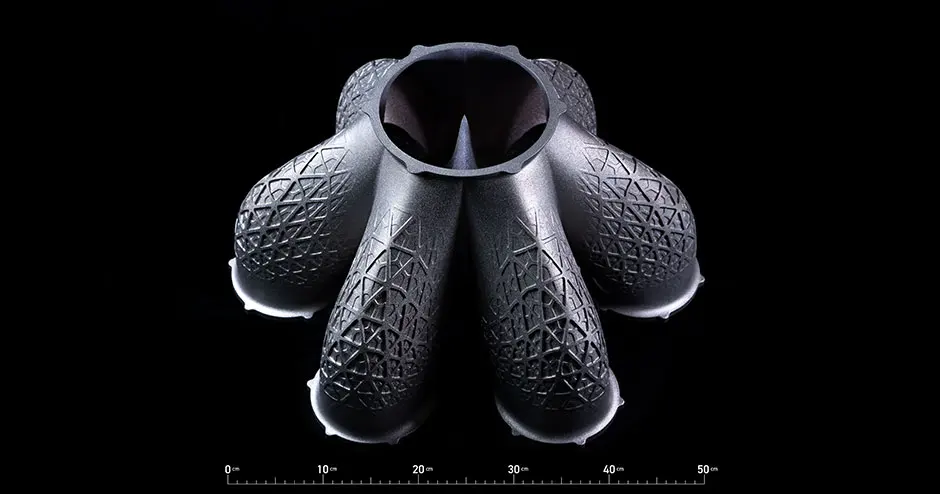CIMP-3D at Penn State is expanding its world-class capabilities in metal based additive manufacturing technologies with installation three Large Format AM systems: a 3D Systems’ DMP Factory 500 3D printer, a SPEE3D metal AM machine, and a wire-arc additive manufacturing system (WAAM) from ABB Inc.
A 3D Systems DMP Factory 500 was recently installed and commissioned within CIMP-3D at Penn State. The Factory 500 is the best in its class build volume (up to 500 × 500 × 500 mm) and, with multiple lasers, is able to produce parts spanning the entire volume quickly, and offers the ability to produce components from a wide range of metal alloys. This system incorporates novel technologies including coaxial monitoring and a high contrast single-lens reflex (SLR) camera placed directly within the build chamber, allowing for comprehensive in-situ process monitoring of the build. The advanced metal production system includes work modules required for AM of metal components; including the printer module (PTM), a de-powdering module (DPM) for powder removal and recovery, and a powder recycle module (PRM) for pre and post build processing of powder, and storage. Additionally, a GF Machining Solutions Cut AM 500, a dedicated electrical discharge machining (EDM) system, allows for parts to be quickly removed from the build plate. The DMP Factory 500 was installed to support the “Research for Virtual Design and Qualification Process for Additively Manufactured Parts Optimized for Multi-Laser Machines” program awarded through the National Center for Manufacturing Sciences’ (NCMS) Advanced Manufacturing, Materials, and Processes (AMMP) program to a team comprised of 3D Systems, Raytheon Technologies, Combat Capabilities Development Command (DEVCOM) Army Research Laboratory (ARL), Penn State Applied Research Lab, Johns Hopkins University, and Identify3D, with a goal to optimize a component relative to an Army modernization product to maximize cooling and improve overall system performance.
SPEE3D metal AM is a high-speed additive manufacturing process that is built on the cold spray process. In this process, metal powders are accelerated using supersonic gas jets and deposited onto the work piece.
The high velocities results in high plastic deformation and strong adhesion of the powder particles to the substrate. Using cold spray technologies, the SPEE3D metal AM system is able to build parts within minutes, instead of hours, making this system one of the fastest and most economical systems available within the additive manufacturing field. In addition, the robust process can be used directly in the field and within harsh environments making this technology an ideal solution for quickly building parts and components at the point of need.
A new wire arc additive manufacturing system (WAAM) from ABB Inc. was also recently installed at the Applied Research Laboratory at Penn State. WAAM may not be well known within the additive manufacturing industry, but it holds one of the biggest potentials for large-scale 3D printing where components are measured not by centimeters but by meters. WAAM builds components by melting a wire forming weld beads onto a substrate using an electric arc heat source. A robotic arm controls the process and, much like most AM processes, the WAAM process builds components layer by layer until the component is completed. Unlike more traditional AM processes, such as powder bed fusion processes, there is no limit to the build envelope, allowing for the production of very large components. This system will further complement the laser based large-scale robotic AM system already located within The Applied Research Laboratory at Penn State. Both systems have their own unique benefits for tackling large scale AM: a laser heat source allows for better melt pool control and opens the ability to use both wire and powder feedstocks while an electric arc heat source offers fast and consistent metal deposition.
With these recent additions, CIMP-3D and Penn State is further growing it already world-class capabilities within metal based additive manufacturing. These systems will further complement the wide range of research directed at Penn State in all aspects of additive manufacturing.
